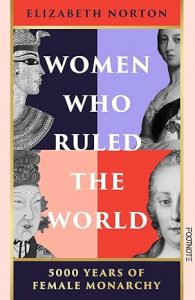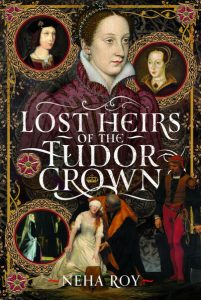Sarah J Hodder’s is the author of ‘The Queen’s Sisters: The Lives of the Sisters of Elizabeth Woodville,’ ‘The York Princesses: The Daughters of Edward IV and Elizabeth Woodville’ and ‘Cecily Bonville-Grey – Marchioness of Dorset: From Riches to Royalty.’
Her latest book, ‘The Woodville Women: 100 Years of Plantagenet and Tudor History’ was published in November 2022.
Buy ‘The Woodville Women’:
Follow Sarah on Social Media
Twitter: @srhjyn8
Facebook: Under The Medieval Oak Tree – S J Hodder
Many thanks to Sarah for answering my questions.
Why did you choose this subject for your book?
I’d come across Elizabeth Grey whilst writing my book on her mother, Cecily Bonville Grey. Cecily and Thomas Grey, Marquis of Dorset, had at least 13 surviving children and Elizabeth Grey was one of their youngest, born c.1492, which is the same year that her grandmother, Elizabeth Woodville, died. Readers of my other books will know that Elizabeth Woodville, queen of Edward IV, has always been the central figure in my writings, around which my stories and research revolve.
Through writing about Cecily Grey’s life, I caught a glimpse of Elizabeth Grey. The fact that she had married, seemingly for love and seemingly without her family’s permission, grabbed my attention. That spark of interest was there; a woman who didn’t conform and followed her own path is often someone with a story worth telling and so the idea was spun that I could tell the tales of grandmother and granddaughter… one who’s life was beginning as the other ended.
But then, with a little bit of further exploration, that seed became the story of three women. With the addition of Elizabeth of York, I had three strong women, linked by not only their names but all from within the same family. Given their respective ages and life spans, their stories told as a whole would allow me to traverse just over 100 years of history… from the Plantagenets to the Tudors. Mother, daughter and granddaughter.
What does your book add to previous works covering these women?
I think my book does something I have actually always tried to do in my writing, which is to show the connections between people and how their lives interweave. Social and family history has always been my passion and when you read historical biographies, you learn so much about the central protagonist but it is, by its nature, often a fairly solitary story. What interests me when I study people is how their lives connected them to others. These three women LIVED the history that we so like to read about during the Wars of the Roses and the Tudor era and knew many of the people we’d all like to invite to our ‘historical dinner parties’ today. Between them, as we travel through their lives and they pass the ‘story baton’ from one to the other, they experienced so much history themselves: battles, coronations, betrayals, murders, a king with six wives!
I’m also always particularly fascinated by how fragile allegiances and friendships were (and sometimes still are). But during this period, as family turned against family and friends betrayed friends, amongst all this there were still relationships being made that would last a lifetime (think William Hastings and Edward IV; Elizabeth of York and Henry Tudor). Those close to the centre of power often had to think carefully about who they could trust and yet all three Elizabeth’s in this book stood steadfastly by their husbands and children, even when it put their own lives in danger.
What surprised you most researching this book?
What surprised me most, I think, was how much trouble Elizabeth Grey’s family caused for Henry VIII as I didn’t really know much about Irish history during this period and the fractious relations between the Irish Earls of Kildare, Ormond and Desmond (amongst others) and the English throne. When I first met Elizabeth, it was through her connection to the Greys and the Marquis of Dorset and the Wars of the Roses. But as I started to delve into her story, her connection to the Tudors came into play in her adult years and that was all completely new to me. Of course through her father, Elizabeth had Elizabeth of York as an aunt and therefore Henry VIII and Margaret and Mary Tudor were her cousins. Elizabeth travelled to France with Mary Tudor when she married Louis XII and served in her household. She remained good friends with her cousin, Mary, and like Mary she sided with Katherine of Aragon in Henry’s divorce, even though she was a contemporary of Anne Boleyn and very possibly knew her from her time in France — they may even have been friends. But through her marriage to Gerald Fitzgerald, the Earl of Kildare, her family and life in Ireland would be a thorn in the side of King Henry during his reign and Elizabeth seemingly managed to tread that fine line that many women do, remaining steadfast in her loyalty to her husband and children whilst remaining on good terms with her cousin, the English King Henry, even amongst all the fighting and rebellion that was going on around her.
Which was your favourite Elizabeth to write about?
Whilst not wanting to sit on the fence and not pick one, I do have to say all of them for different reasons! Writing the book was, for me, as much of a journey as I hope readers will go on when they read it. Starting off with Elizabeth Woodville, she was my familiar. I have covered her story many times but usually as the lynchpin from which I was able to tell the story of her sisters and daughters. This time she could actually become the star of the show for a time and in doing that, I got to really explore her back story a little more. Her roots and her connections to both Luxembourg and the Woodville ancestry, before then telling her tale, which has always fascinated me. Love her or hate her, which many do, I hope I can bring out the human Elizabeth. Her daughter, Elizabeth of York, often fades into her own shadow. The fact that she could, and did, navigate both the houses of York and Lancaster (later Tudor) can make her appear like she was a placid character, one that could be moulded and bent by those around her. But I think someone who can be a bridge between warring factions actually has a real inner strength; it’s not always easy to hide your own feelings whilst doing the ‘right thing’ and I think in Elizabeth’s story is a story of a woman with courage, compassion and tenacity. And of course the ‘was he/wasn’t he dilemma’ that was Perkin Warbeck features heavily in Elizabeth of York’s story and I can’t help but think that she would have been the key to exposing his identity one way or the other if she had chosen to. She didn’t, so from a human viewpoint – why? And then lastly, lovely Elizabeth Grey, who proved to be a more fascinating subject than I could ever have imagined, for reasons given in my answer above.
Are you surprised for a woman who led such a colourful life that Elizabeth Grey is not better known?
Not really, because she wasn’t royalty. And because, as they say, history was written by men about men. So if you became queen, you were perhaps the exception to that because your story becomes the story of the country you ruled. But for other women, they simply did not leave behind records of their lives. I’m sure there are many many more women who would make fascinating subjects of a book but they have faded into obscurity and left us no trace of the women they were. That is being fixed today with some amazing historians doing the research to find and tell the stories of women like Mary Boleyn, Catherine Carey, Katherine Swynford, Jane Shore etc. With Elizabeth Grey (and her mother, Cecily Grey, actually), I had to look really hard to find her amongst other historical records … in documents about her parents, or those concerning Mary Tudor, Henry VIII, or news of England sent back to the continent by Eustace Chapuys. She was a bit part mention in bigger stories but through them, thankfully, Elizabeth Grey was there enough that I could piece together her life in fragments. And that, is my favourite part of my writing!




































